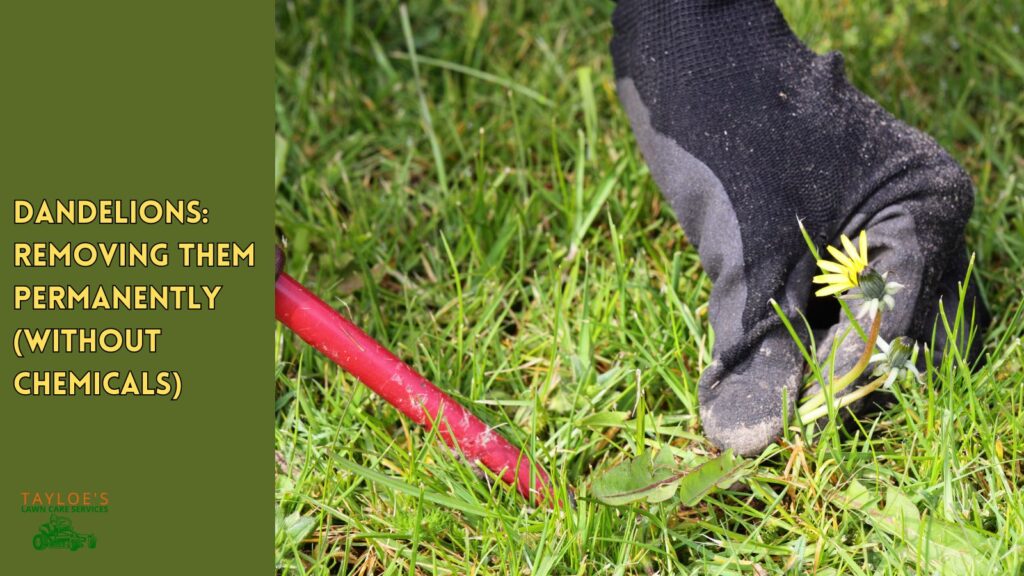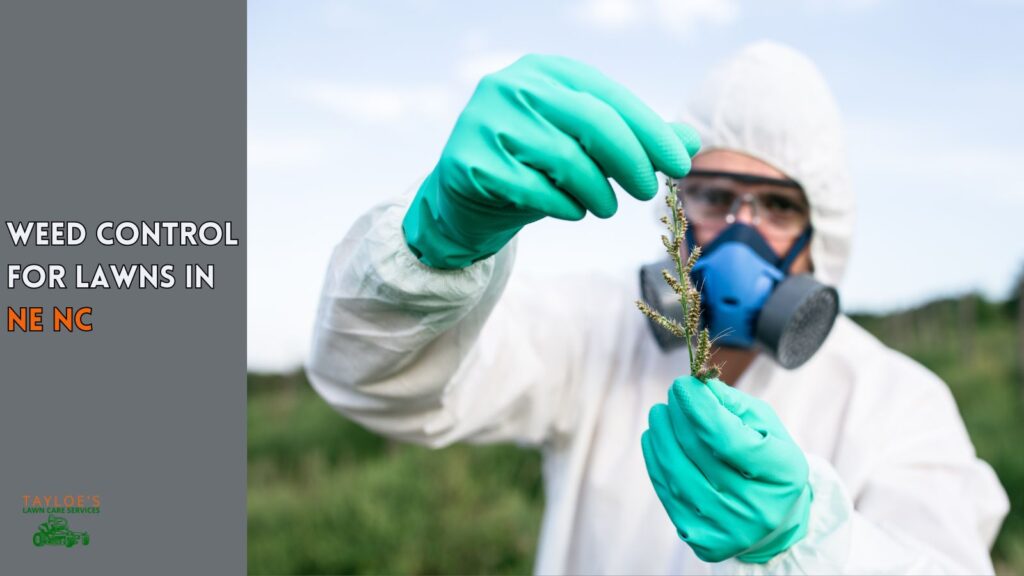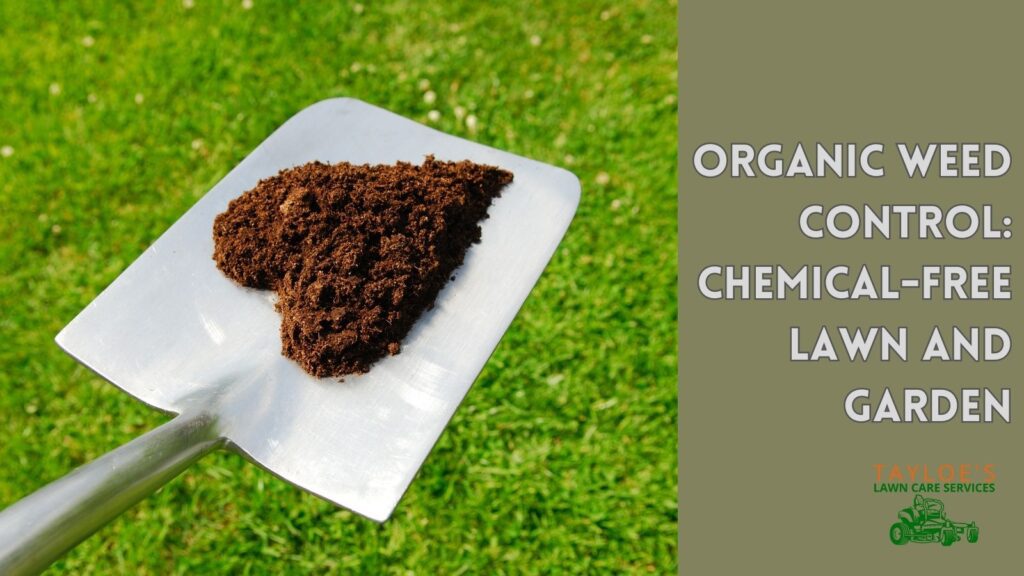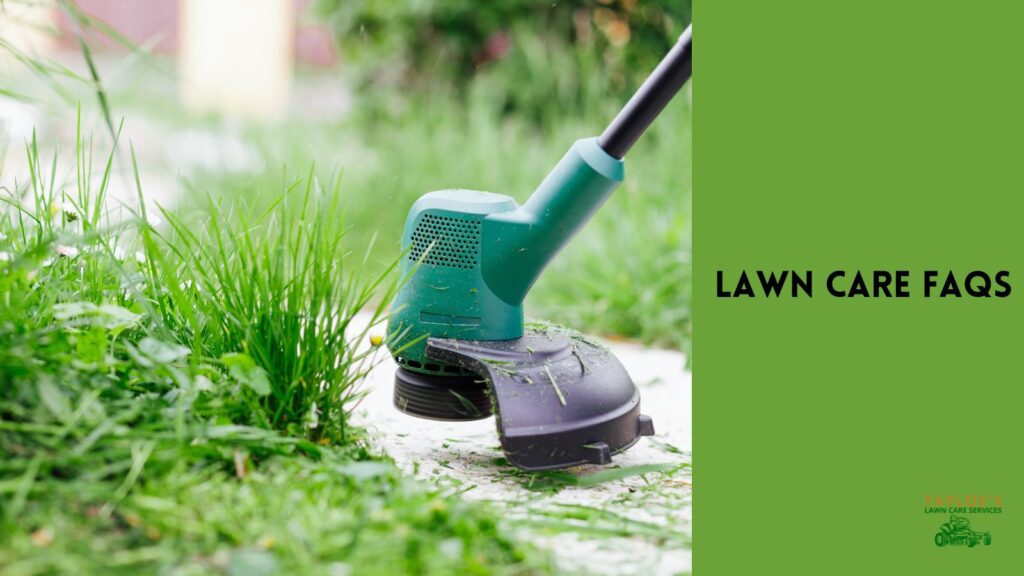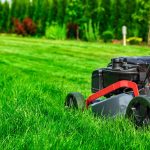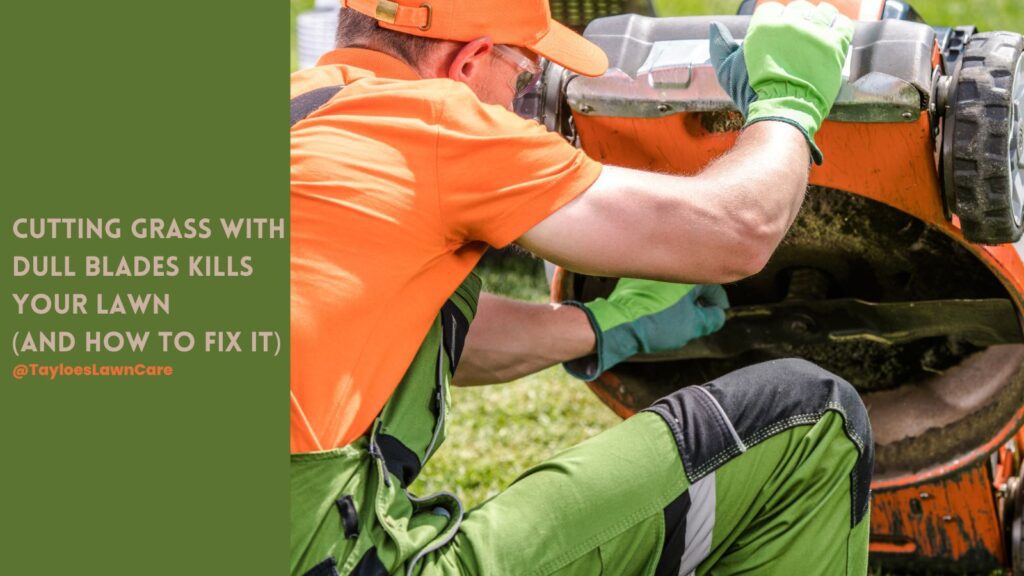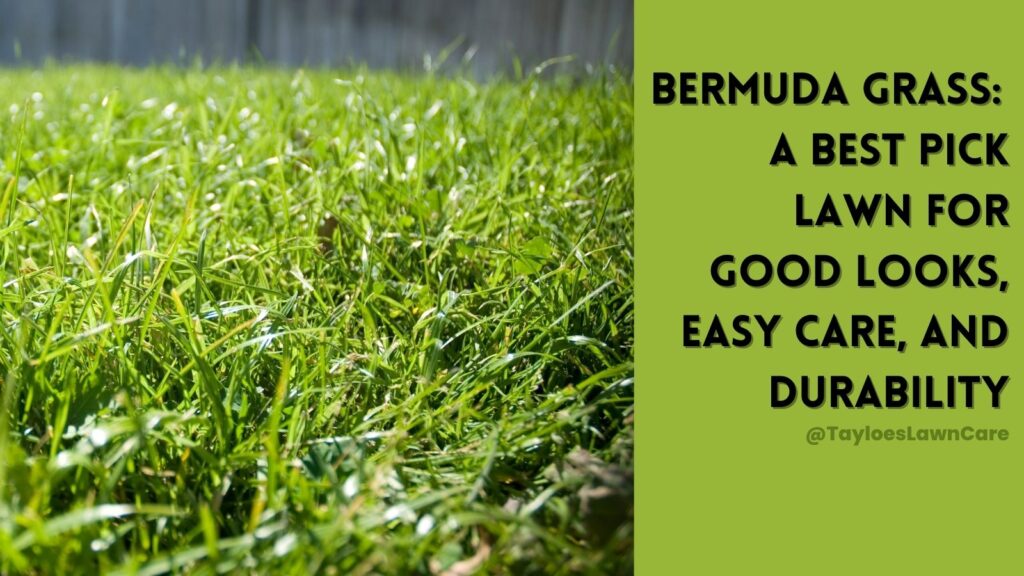Last Updated on: 7th August 2024, 06:20 am
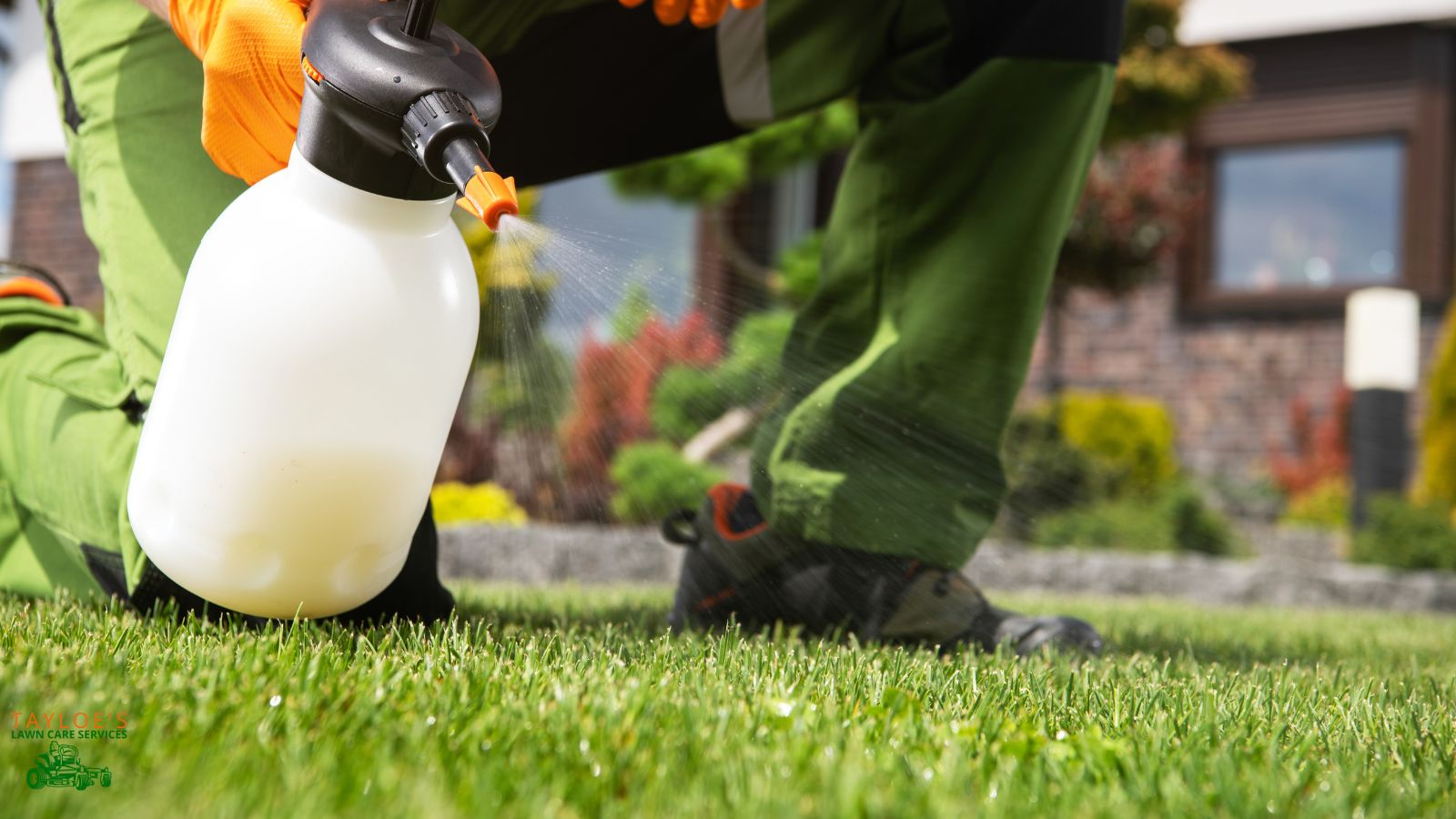
Pre-emergent herbicide means weed prevention made easy.
If you struggle with broadleaf weeds in your lawn, flower beds, or other unwanted places, then it might be time to apply pre-emergent products to help keep things under control. Even those who love gardening generally despise pulling weeds – especially when feeling like it’s always a losing battle. A quick pre-emergent application can be the solution.
I am a licensed customer applicator, holding the North Carolina Department of Agriculture certification. My license covers both public health spraying (flying insects) and treating lawn and ornamentals (creepy crawly ground dweller bugs). As you read this, remember that it’s for informational purposes; I cannot diagnose your weeds or a proper treatment plan without seeing them. And please take all precautions before you apply pre-emergent herbicide to anything in your yard, including protective gear and a respirator mask.
Read on to learn how these products can help you enjoy your lawn and garden even more!
Where Do Specific Weeds Come From?
Emerging weeds come to your lawn and garden from several places. Seed germination starts after the seeds get transported to your yard from these potential sources:
Wind Spreads Weeds to Your Yard
Many weed seeds (ahem – dandelions) are lightweight. They blow in the breeze and land where the wide takes them. Wind transportation is one of the most common ways seeds spread.
Pets and Birds Spread Weeds to Your Lawn and Garden
Pets and wildlife can also start the seed germination cycle. They get tiny seeds stuck to their fur, and it falls off in your lawn. Birds eat the seeds and then make “deposits” into your lawn and garden.
Weedy Mulch or Soil Imports Weeds to Your Gardens
You may have purchased weed or soil that had weeds germinating in the bag. They can be tiny, so you missed it. You have weeds growing in your gardens once it gets sunshine and water.
Your Neighbors Make Zero Effort to Control Weeds
We often see this situation in homes next to vacant properties. If a lawn is near a vacant or completely unmaintained home, seeds will likely spread from the unkempt neighboring property.
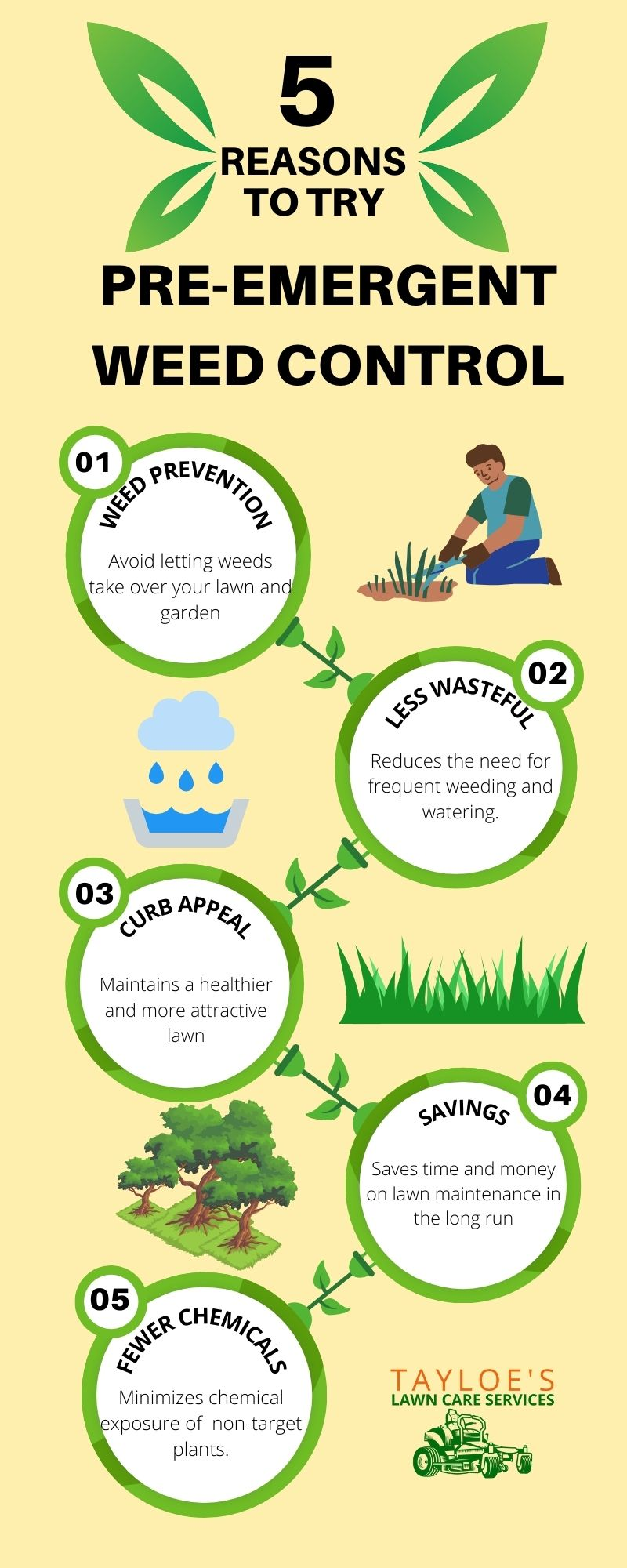
What Are Pre-Emergent Herbicides?
Pre-emergent herbicides are chemicals that prevent the germination of weed seeds. Unlike post-emergent herbicides, which kill existing weeds, pre-emergents create a chemical barrier at the soil surface. The weed control effort disrupts the normal development processes of newly germinated weed seeds.
On the other hand, a post-emergent herbicide concentrate is a chemical agent that controls vegetation that has already sprouted. Unlike pre-emergent herbicides, which prevent weed seeds from germinating, a post-emergent herbicide targets the foliage or roots of existing weeds, absorbing into the plant and disrupting its physiological processes.
A post-emergent herbicide can be selective, affecting only specific weeds, or non-selective, killing any vegetation they contact. Application timing and method are crucial with a post-emergent herbicide.
Protection Against Grassy and Broadleaf Weeds
Pre-emergent herbicides effectively control broadleaf weeds (e.g., dandelions, chickweed) and grassy weeds (e.g., annual bluegrass) before they can establish themselves and compete with your plants. This proactive approach is especially valuable for maintaining pristine lawns, flower beds, and vegetable gardens, as it reduces the need for more aggressive weed management techniques later on.
Additionally, pre-emergent herbicides help ensure that nutrients, water, and sunlight are reserved for your desired plants, promoting healthier and more vigorous growth free from the competition of invading annual weeds.
When you properly apply pre-emergent herbicide, you can say goodbye to grassy and broadleaf weeds and hello to a weed-free, healthy lawn.
Pre-Emergents Are Good for Preventing Crabgrass and POA Annua
Pre-emergent herbicides can be effective against various weeds, including both broadleaf and grassy types. Here are some common weeds that pre-emergent products often target:
Crabgrass: This species is one of the most common grassy weeds and can be very invasive in lawns. It spreads quickly during the warm months.
Chickweed: This is a common cool-season annual. It forms a dense mat.
Dandelions: Known for their bright yellow flowers and fluffy seed heads, these can take over any lawn or garden if not controlled.
Foxtail: This grassy weed is harmful, especially to pets, as seeds can get lodged in their paws.
Goosegrass: Similar to crabgrass, goosegrass thrives in compacted soil.
Spurge: This broadleaf weed spreads rapidly and can be identified by its low, mat-forming growth habit and milky sap.
Lambsquarters: This broadleaf weed is common in flower beds and can grow quite tall if not controlled.
Pigweed: AKA Amaranth, pigweed is a tough weed that can rapidly take over.
Barnyard grass: An annual grassy weed that competes with crops and desirable grasses for nutrients and water.
Nutsedge: Though not always controlled by traditional pre-emergent herbicides, some products target this challenging weed.
Poa annua (Annual Bluegrass): This grassy weed is common on golf courses and lawns. However, due to its clumpy appearance, annual grasses like these can be problematic.
Pre-emergent herbicides must be carefully chosen and applied at the right time of year to be effective against these weeds. Typically, the application should occur just before the target weeds’ typical germination period. Always read and follow the product’s label for specific information on which weeds it controls and the best application timing to maximize effectiveness while minimizing unwanted harm to desirable plants and the environment.
When Is the Best Time to Prevent Weeds?
You should plan to apply granular pre-emergent herbicide or liquid pre-emergent products before the weeds emerge.
Early Fall Application for Winter Annuals
Winter annuals germinate in the fall, grow during the winter, and produce seeds in late spring or early summer before dying. To prevent these weeds, apply pre-emergent herbicides in early fall. This timing ensures that the herbicide forms a barrier in the soil just as the seeds germinate.
It’s also worth mentioning that it can be helpful to aerate the lawn to help the chemicals work effectively.
Spring Application for Summer Annuals
Summer annuals sprout in the spring, grow through the summer, and die off with the first frost in the fall. This timing prevents crabgrass, so your warm-season turf will thrive.
To combat pesky summer weeds, try pre-emergent herbicides in late winter or early spring before the soil temperatures warm up to the typical germination range (around 55 degrees Fahrenheit for many species).
Early Fall Application for Winter Annuals
Winter annuals germinate in the fall, grow during the winter, and produce seeds in late spring or early summer before dying. To prevent these weeds, apply pre-emergent herbicides in early fall. This timing ensures that the herbicide forms a barrier in the soil just as the undesired plant life starts germinating.
Preventing Weeds on Established Lawns
Applying pre-emergent herbicides on established lawns is generally safe and effective because these products are designed to target germinating weed seeds, not mature plants. Healthy lawns with well-developed root systems are typically resilient to the chemicals found in pre-emergent herbicides. These herbicides create a barrier at the soil surface that affects only the sprouting seeds, preventing them from developing a viable root system. As a result, the mature grass, which has already surpassed this vulnerable stage of development, remains unaffected.
Furthermore, before being marketed, pre-emergent herbicides are rigorously tested for safety and environmental impact. When applied according to the manufacturer’s instructions, they pose minimal risk to the health of your lawn. Always follow label directions closely, including the recommended application rates and timing, to protect your lawn and optimize weed control efficiency.
Does Pre-emergent Weed Control Use Selective Herbicides?
Most pre-emergent herbicides do not differentiate between weed seeds and the seeds of desirable plants. Instead, they act on any seeds that have germinated where the chemical barrier has been established.
The selectivity of these herbicides primarily comes from their targeted application and timing. They don’t have an inherent ability to distinguish between different plant species. Here’s how selectivity is typically achieved:
Timing of Application: Pre-emergent herbicides are usually applied at specific times of the year when the target weed seeds germinate and before the desirable plants are seeded or dormant. For example, applying a pre-emergent herbicide early in the spring can prevent summer weeds. However, it won’t affect a mature lawn established in previous seasons.
Placement and Dosage: Careful control over where and how much herbicide is applied can help protect desirable plants. For instance, you should only use the herbicide in areas with weed problems. Re-application may be necessary during the growth season
Plant Resistance: Some desirable plants are naturally more resistant to certain herbicides than common weeds. This resistance can be due to differences in how the plants absorb, metabolize, or transport the chemical. Grass lawns, for example, might tolerate a herbicide that targets broadleaf weed seedlings.
Using Plant-Specific Herbicides: Some pre-emergent herbicide targets specific biochemical pathways or structures more common in certain weed species than in most desirable plants. However, these are more exceptions than rules.
Because pre-emergent herbicide affects seeds and young seedlings, it’s crucial to ensure that any desirable plants are either well-established or planted after the residual effect of the herbicide has diminished. Always following label instructions and knowing the growth cycle of weeds and desirable plants in your area is essential for effective and selective weed control.
How a Pre-Emergent Herbicide Can Prevent Weed Growth
Pre-emergent herbicides protect against weed growth primarily by inhibiting the development of newly germinated seeds. The science behind how these herbicides work involves interfering with various biological processes essential for weed seedlings to establish and grow.
These actions result in a potent protective barrier against weeds. The pre-emergent herbicide must be applied before the weeds germinate and typically requires proper activation with water to form an effective barrier at or near the soil surface. This treatment is ineffective against already established weeds, as it targets the very early stages of a plant’s life cycle. It focuses primarily on the seeds as weeds emerge from the soil.
Here’s a detailed look at the key mechanisms:
Inhibits Plant Cell Division (Mitosis)
Many pre-emergent herbicide products target a specific phase of cell division known as mitosis. During mitosis, a cell divides to produce two new cells, crucial for growing roots and shoots in a seedling. By disrupting this process, the herbicide helps in preventing root development, stopping its growth after germination.
The Weed Preventer Disrupts the Cell Membranes
Some pre-emergent herbicide disrupts the integrity of cell membranes in seedling root cells. This disruption leads to leakage of essential cell contents and impairs the plant’s ability to absorb water and nutrients, ultimately leading to the seedling’s death.
Weed Preventers Interrupt the Key Enzymes Needed for Plant Growth
Another mode of action is the inhibition of key enzymes that are essential for plant growth. For example, some herbicides inhibit the synthesis of fatty acids necessary for building cell membranes. In contrast, others may inhibit enzymes critical for synthesizing amino acids or other vital molecules.
Granular Pre-emergent Herbicide Vs. Liquid herbicides
Pre-emergent weed preventers come in various formats. Each suits different application methods and landscape needs. The most common forms are liquid and granular, each having specific advantages and methods of application:
Liquid Pre-emergent Herbicides
These are typically concentrates that require water dilution and a sprayer to apply. Liquid formulations allow for even distribution and are particularly effective for covering large areas uniformly. After you apply liquid pre-emergent, the soil can absorb it quickly, creating a barrier that affects weed seeds as they germinate. An application usually involves using a hand-held, backpack, or wheeled tank sprayer to apply the diluted solution across the desired area.
Granular Pre-emergent Herbicides
These come in small granules spread over the soil surface using a broadcast or drop spreader. Granular herbicide is a favorite for larger properties because of its ease of application, especially in larger residential yards. After spreading granular herbicides, they typically need to be watered in to activate the ingredients, as moisture helps to dissolve the granules and incorporate the chemical into the soil where it forms a barrier.
Pelletized Pre-emergent Herbicides
Similar to granular types but often in a larger pellet form, these are spread using spreaders and are designed to break down slowly over time, which can be advantageous for long-term weed control.
Weed-and-Feed Products
These are combination products that contain both pre-emergent herbicides and fertilizers. They are typically granular and designed to feed the lawn with essential nutrients while preventing the growth of new weeds.
Safety First When You Apply Pre-emergent Herbicides
When using any pre-emergent herbicide, it’s crucial to apply it at the correct time and follow the manufacturer’s instructions to ensure both effectiveness and safety. Make sure to choose a formulation suitable for the types of weeds you target and the specific plants you are trying to protect.
Always read the product label carefully for detailed information on proper handling, application rates, timing, and safety precautions. Proper adherence to label instructions maximizes the effectiveness and minimizes potential harm to the environment and non-target species.
The Dangers of Too Much Herbicide Application
Yes, it’s super annoying when weeds grow so fast and take over your beautiful summer annuals, ground covers, and food plots. But too much of a good thing can lead to disaster.
Here’s what happens when you over apply pre-emergents:
Environmental Impact When You Overdo Weed Control Products
Excessive herbicide use can lead to chemical runoff, especially during rainfall or over-irrigation. This runoff can contaminate nearby water sources such as rivers, lakes, and groundwater. Aquatic life can be particularly vulnerable to herbicide pollution, leading to disrupted ecosystems and the death of fish and other wildlife. Additionally, herbicides can harm non-target plant species, reducing biodiversity and altering habitats.
Soil Health and an Inability to Produce Seed in Desired Plants
Herbicides used in excess can disturb the microbial balance within the soil. This can degrade soil health by killing beneficial microbes that assist in nutrient cycling and plant growth. Over time, this can lead to reduced soil fertility, making it harder for plants to grow without additional chemical aids.
Resistance in Weeds as They Adapt to the Active Ingredient
Just as overusing antibiotics can lead to antibiotic-resistant bacteria, using too much herbicide can promote the development of resistance in weed populations. This results in “superweeds” that are more difficult to control. In fact, these other weeds may require even more potent chemical solutions that worsen the cycle of resistance and chemical reliance.
Human Health Risks of Pre-emergent Herbicide Application
Overexposure to herbicides, whether through direct contact during application or indirectly through environmental exposure, can pose health risks to humans. These can include acute effects such as skin irritation and respiratory issues. With some specific weed-preventer products, you risk more serious long-term effects like endocrine disruption and an increased risk of cancer.
Economic Costs in the Quest for a Weed-Free Lawn
Using more non-selective herbicide than necessary increases costs for farmers, landscapers, and homeowners without providing additional benefits. Over time, as weed resistance builds, these costs can escalate due to the need for more intensive weed control measures and possibly more expensive chemicals.
What to Do Next, After Your Pre-emergent Herbicide Application
After applying a pre-emergent herbicide to your lawn, proper care is essential to maintain its health and enhance its resistance against weeds and pests. Here are some key tips to consider:
Pest Control: Regular monitoring for pests is crucial. Even though your lawn might be protected against weeds, it can still be vulnerable to pests like grubs, beetles, or fungal diseases.
Encourage Strong Growth: To help your lawn compete effectively against new weed seeds, focus on practices promoting strong, healthy grass. This includes regular feeding, fertilizer, adequate watering, and proper mowing techniques.
Maintain a Weed-Free Environment: Some weeds might slip through even with pre-emergent herbicide, especially if the herbicide barrier is broken or improperly applied. Inspect your lawn regularly for any signs of weed growth, and consider using post-emergent herbicides if necessary.
Seed at the Right Time: Timing is crucial if you plan to overseed or introduce new grass types to your lawn. Pre-emergent herbicide can inhibit the growth of new grass and weed seeds, so it’s important to wait until the herbicide’s effect has diminished before seeding. Check the product label for guidance on the waiting period between herbicide application and seeding.
Always read and follow the label instructions on any lawn care product to ensure you’re using it safely and effectively.
Need Help Discovering the Best Pre-emergent Herbicides for Your Lawn?
If pre-emergents sound like a good plan for your lawn and garden, Tayloe’s Lawn Care Services, LLC can help. Call or text us at 252.287.3376 for a free consultation – we can help make your lawn beautiful in Bertie County and Hertford County, North Carolina.
Author Profile

- Randy Tayloe is the COO of Tayloe's Lawn Care Service, LLC. He is a certified custom applicator, recognized by the North Carolina Department of Agriculture Pesticide Division. A native of Bertie County, NC, and graduate of Bertie High School, he wants to beautify his home county - one yard at a time.
Latest entries
 GardeningApril 1, 2025Fountain grasses add colorful foliage and movement
GardeningApril 1, 2025Fountain grasses add colorful foliage and movement GardeningMarch 21, 2025White cloud muhly grass growing guide
GardeningMarch 21, 2025White cloud muhly grass growing guide Lawn CareFebruary 25, 2025Should I mow every week?
Lawn CareFebruary 25, 2025Should I mow every week? Lawn CareFebruary 18, 202515 Simple early spring lawn care tips
Lawn CareFebruary 18, 202515 Simple early spring lawn care tips

